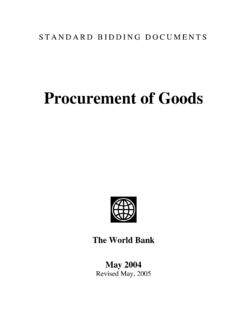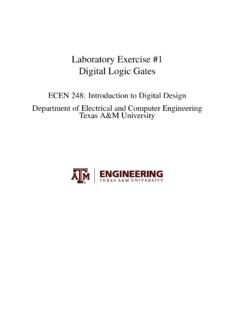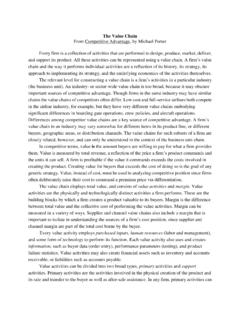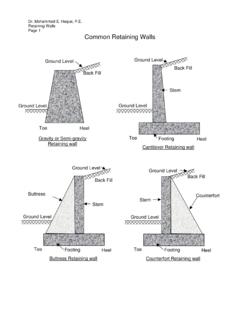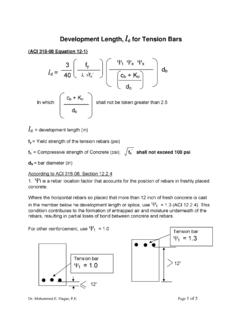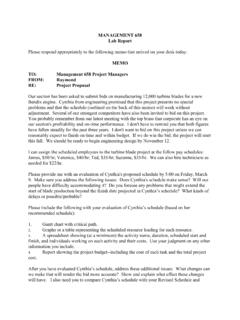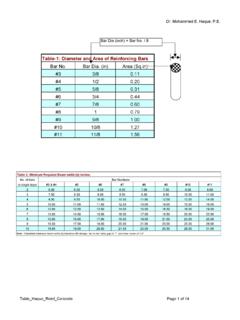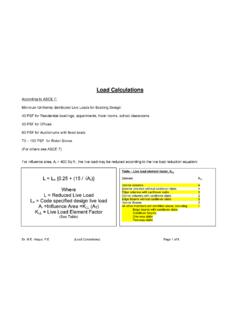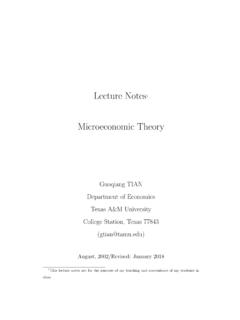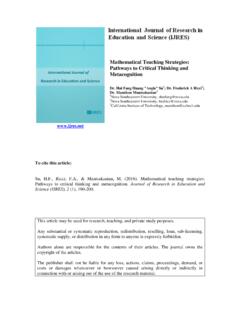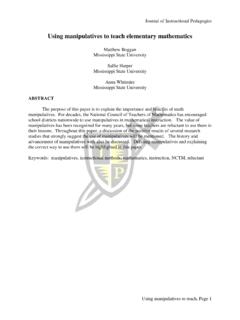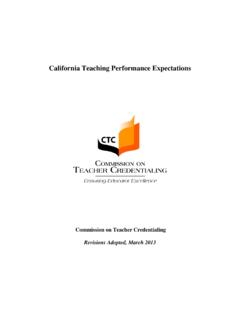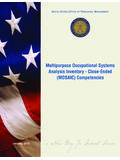Transcription of Mathematical Ecnomics
1 Lecture Notes1 Mathematical EcnomicsGuoqiang TIAND epartment of EconomicsTexas A&M UniversityCollege Station, Texas version: August 20181 The lecture notes are only for the purpose of my teaching and convenience of my students in class,please not put them online or pass to any The Nature of Mathematical Economics and Mathematical Economics .. Advantages of Mathematical Approach .. 22 Economic Ingredients of a Mathematical Model .. The Real-Number System .. The Concept of Sets .. Relations and Functions .. Types of Function .. Functions of Two or More Independent Variables .. Levels of Generality .. 103 Equilibrium Analysis in The Meaning of Equilibrium .. Partial Market Equilibrium - A Linear Model .. Partial Market Equilibrium - A Nonlinear Model.
2 General Market Equilibrium .. Equilibrium in National-Income Analysis .. 194 Linear Models and Matrix Matrix and Vectors .. Matrix Operations .. Linear Dependance of Vectors .. Commutative, Associative, and Distributive Laws .. Identity Matrices and Null Matrices .. Transposes and Inverses .. 295 Linear Models and Matrix Algebra (Continued) Conditions for Nonsingularity of a Matrix .. Test of Nonsingularity by Use of Determinant .. Basic Properties of Determinants .. Finding the Inverse Matrix .. Cramer s Rule .. Application to Market and National-Income Models .. Quadratic Forms .. Eigenvalues and Eigenvectors .. Vector Spaces .. 566 Comparative Statics and the Concept of The Nature of Comparative Statics.
3 Rate of Change and the Derivative .. The Derivative and the Slope of a Curve .. The Concept of Limit .. Inequality and Absolute Values .. Limit Theorems .. Continuity and Differentiability of a Function .. 707 Rules of Differentiation and Their Use in Comparative Rules of Differentiation for a Function of One Variable .. Rules of Differentiation Involving Two or More Functions of the Same Vari-able .. Rules of Differentiation Involving Functions of Different Variables .. Integration (The Case of One Variable) .. Partial Differentiation .. Applications to Comparative-Static Analysis .. Note on Jacobian Determinants .. 89ii8 Comparative-static Analysis of Differentials .. Total Differentials .. Rule of Differentials.
4 Total Derivatives .. Implicit Function Theorem .. Comparative Statics of General-Function Models .. Matrix Derivatives .. 1059 Derivatives of Exponential and Logarithmic The Nature of Exponential Functions .. Logarithmic Functions .. Derivatives of Exponential and Logarithmic Functions .. 10910 Optimization: Maxima and Minima of a Function of One Variable Optimal Values and Extreme Values .. General Result on Maximum and Minimum .. First-Derivative Test for Relative Maximum and Minimum .. Second and Higher Derivatives .. Second-Derivative Test .. Taylor Series .. Nth-Derivative Test .. 12011 Optimization: Maxima and Minima of a Function of Two or More The Differential Version of Optimization Condition .. Extreme Values of a Function of Two Variables.
5 Objective Functions with More than Two Variables .. Second-Order Conditions in Relation to Concavity and Convexity .. Economic Applications .. 13312 Optimization with Equality Effects of a Constraint .. Finding the Stationary Values .. Second-Order Condition .. General Setup of the Problem .. Quasiconcavity and Quasiconvexity .. Utility Maximization and Consumer Demand .. 14913 Optimization with Inequality Non-Linear Programming .. Kuhn-Tucker Conditions .. Economic Applications .. 16014 Linear The Setup of the Problem .. The Simplex Method .. Duality .. 17415 Continuous Dynamics: Differential Differential Equations of the First Order .. Linear Differential Equations of a Higher Order with Constant Coefficients Systems of the First Order Linear Differential Equations.
6 Economic Application: General Equilibrium .. Simultaneous Differential Equations. Types of Equilibria .. 19416 Discrete Dynamics: Difference First-order Linear Difference Equations .. Second-Order Linear Difference Equations .. The General Case of Ordern.. Economic Application:A dynamic model of economic growth .. 20317 Introduction to Dynamic The First-Order Conditions .. Present-Value and Current-Value Hamiltonians .. Dynamic Problems with Inequality Constraints .. Economics Application:The Ramsey Model .. 208ivChapter 1 The Nature of MathematicalEconomicsThe purpose of this course is to introduce the most fundamental aspects of the mathe-matical methods such as those matrix algebra, Mathematical analysis, and Economics and Mathematical EconomicsEconomicsis a social science that studies how to make decisions in face of scarce , it studies individuals economic behavior and phenomena as well as howindividual agents, such as consumers, households, firms, organizations and governmentagencies, make trade-off choices that allocate limited resources among competing economicsis an approach to economic analysis.
7 In which the e-conomists make use of Mathematical symbols in the statement of the problem and alsodraw upon known Mathematical theorems to aid in Mathematical economics is merely an approach to economic analysis, it shouldnot and does not differ from the nonmathematical approach to economic analysis in anyfundamental way. The difference between these two approaches is that in the former,the assumptions and conclusions are stated in Mathematical symbols rather than wordsand in the equations rather than sentences so that the interdependent relationship amongeconomic variables and resulting conclusions are more rigorous and concise by using math-1ematical models and Mathematical statistics/econometric study of economic social issues cannot simply involve real world in its experiment,so it not only requires theoretical analysis based on inherent logical inference and, moreoften than not, vertical and horizontal comparisons from the larger perspective of historyso as to draw experience and lessons.
8 But also needs tools of statistics and econometrics todo empirical quantitative analysis or test, the three of which are all indispensable. Whenconducting economic analysis or giving policy suggestions in the realm of modern eco-nomics, the theoretical analysis often combines theory, history, and statistics, presentingnot only theoretical analysis of inherent logic and comparative analysis from the historicalperspective but also empirical and quantitative analysis with statistical tools for exami-nation and investigation. Indeed, in the final analysis, all knowledge is history, all scienceis logics, and all judgment is such, it is not surprising that mathematics and Mathematical statistics/econometricsare used as the basic analytical tools, and also become the most important analytical toolsin every field of economics.
9 For those who study economics and conduct research, it isnecessary to grasp enough knowledge of mathematics and Mathematical statistics. There-fore, it is of great necessity to master sufficient Mathematical knowledge if you want tolearn economics well, conduct economic research and become a good Advantages of Mathematical ApproachMathematical approach has the following advantages:(1) It makes the language more precise and the statement of assumptionsmore clear, which can deduce many unnecessary debates resulting frominaccurate definitions.(2) It makes the analytical logic more rigorous and clearly states the boundary,application scope and conditions for a conclusion to hold. Otherwise, theabuse of a theory may occur.(3) Mathematics can help obtain the results that cannot be easily attainedthrough intuition.
10 (4) It helps improve and extend the existing economic is, however, noteworthy a good master of mathematics cannot guarantee to bea good economist. It also requires fully understanding the analytical framework andresearch methodologies of economics, and having a good intuition and insight of realeconomic environments and economic issues. The study of economics not only calls for theunderstanding of some terms, concepts and results from the perspective of mathematics(including geometry), but more importantly, even when those are given by mathematicallanguage or geometric figure, we need to get to their economic meaning and the underlyingprofound economic thoughts and ideals. Thus we should avoid being confused by themathematical formulas or symbols in the study of in all, to become a good economist, you need to be of original, creative andacademic way of 2 Economic Ingredients of a Mathematical ModelA economic model is merely a theoretical framework, and there is no inherent reason whyit must Mathematical .
